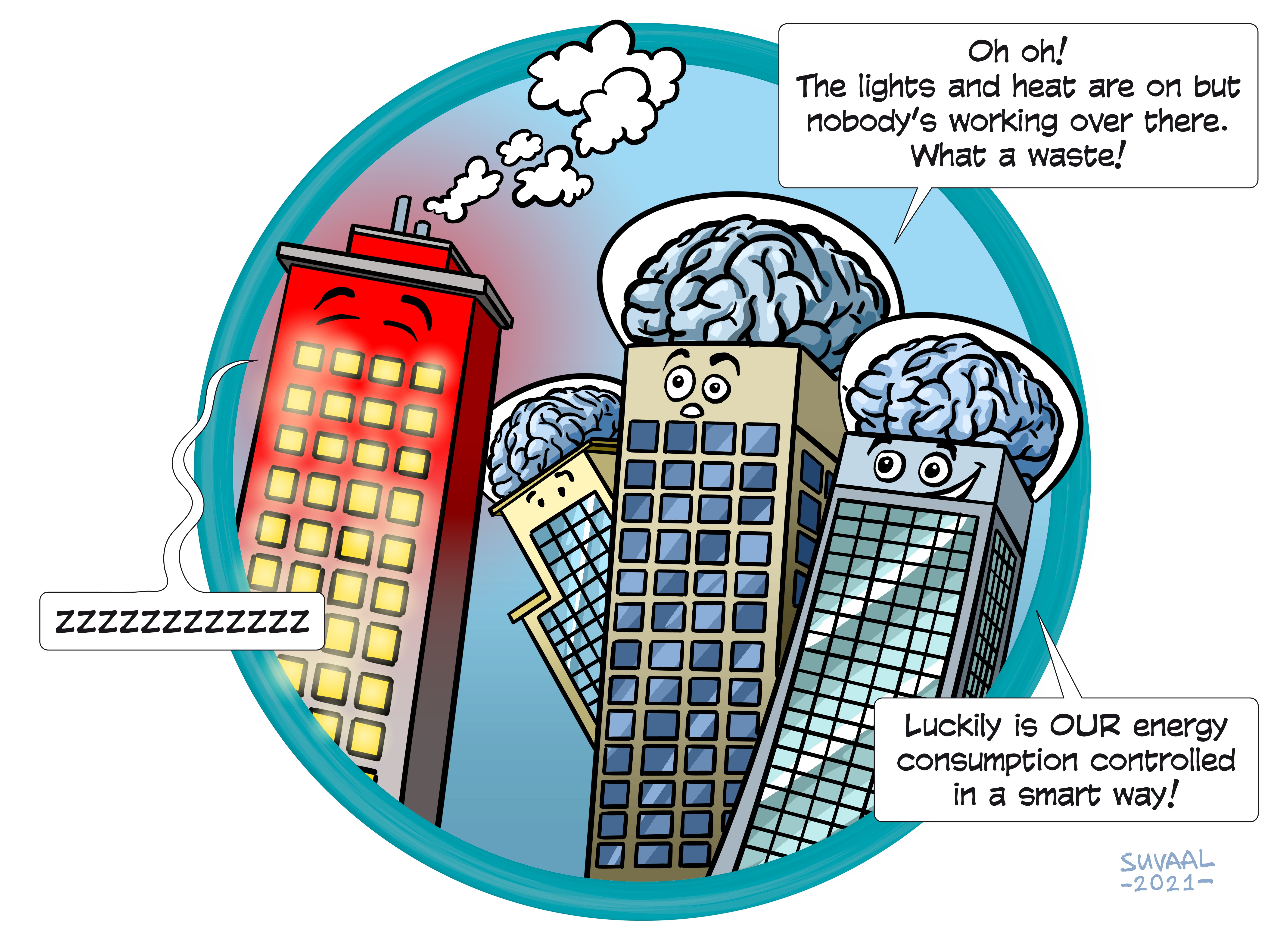Brains 4 Buildings
Research Theme: Energy


A TRL is a measure to indicate the matureness of a developing technology. When an innovative idea is discovered it is often not directly suitable for application. Usually such novel idea is subjected to further experimentation, testing and prototyping before it can be implemented. The image below shows how to read TRL’s to categorise the innovative ideas.
Summary of the project
Currently, the existing building management systems of office spaces follow fixed schedules that are ill-adapted to the actual, dynamic use of the buildings. In 2020, TU Delft Campus was merely occupied for 1/4th of the time, however, energy consumption only decreased by 3%. These offices already have smart systems that collect data, but aren't controlled in a smart way. The objective of Brains4Buildings project is to develop smart methods and algorithms to reduce energy consumption while allowing for maximised and customisable comfort.
Even in the most modern utility buildings energy is wasted due to malfunctioning installations and unexpected user behaviour. This means that, without requiring physical changes to the building, a significant cost reduction can be obtained by making the building management systems smarter. By adding ‘Brains’ to a building, that is fed by data from smart meters, building management systems and the Internet of Things will be capable to make weighted decisions how to maximize energy efficiency and CO2-reduction, increase comfort, respond flexibly to user behaviour and local renewable energy supply and demand, and save on maintenance costs. The technique provides a great opportunity but is still underdeveloped and barely implemented at this moment. The current models and algorithms are not yet fast and efficient enough to make buildings really 'smarter', and the implementation is a laborious and time-consuming exercise.
What's next?
In the Brains4Building project academia and applied sciences partner with among others installation and maintenance companies, interface/product developers, assets owners, facility & building managers, , sensor experts and building users. The research is organised around open living labs, that will be used to develop and test the first prototypes of new smart algorithms, methods and interfaces in a protected environment. Afterwards, the industry partners will develop and validate these prototypes further in their own systems. One of the main challenges, is to develop scalable affordable solutions. We therefore need to work amongst others on interoperability and data integration methods. Moreover, B4B needs to convince managers of the benefits and start investing and using smart system. Lastly, the end users need to be involved to understand how they want to use their offices, to determine the extent to which building management systems should be adapted (e.g. climate zone levels, room levels, individual levels), while balancing sustainability requirements.
Contribution to the Energy transition?
By enabling a smarter use of existing offices and building management systems, energy consumption can be reduced by 20-30% without sacrificing comfort and usability.
prof. dr. Laure Itard
prof. dr. ir. Tamas Keviczky
prof. dr. David Keyson
dr. Neil Yorke-Smith
Mirjam Harmelink MSc
Faculties involved
- ABE
- EEMCS
- 3ME
- IDE
